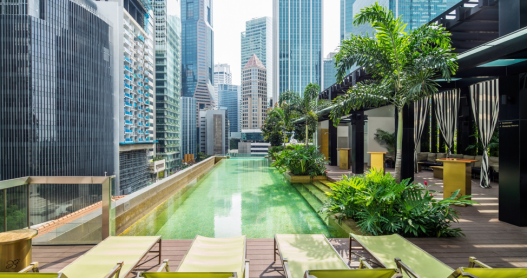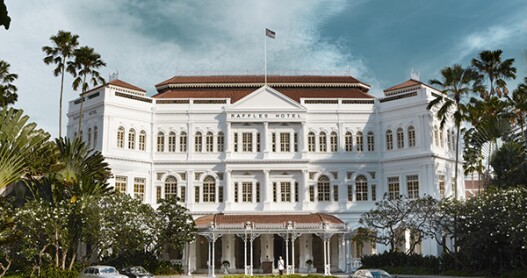Overview
When’s the best time to go to Singapore?
The climate in Singapore, just north of the equator, remains fairly constant at 85 degrees with high humidity and a chance of showers. It rains slightly more than average between November and January, and slightly less from May to July. Rain clouds tend to swoop in quickly, unleash a torrent, and then clear out again—so it’s quite common to switch between sunglasses and an umbrella multiple times throughout any given day. It takes time to adjust to the high humidity, so walk at a leisurely pace and drink plenty of water. The temperature doesn’t change much when the sun goes down, but you may need a light sweater or shawl to insulate yourself against the Singaporean tendency to over-air-condition indoor spaces.
How to get around Singapore
Singapore’s Changi Airport is a world-class transportation hub and a great introduction to the efficiency, cleanliness, and quirky charm that you can expect from the rest of the city. From the airport, it takes about an hour to get downtown by either bus or MRT (subway), either of which is a cost-effective option. A taxi will take 25 minutes and cost around SGD30. It is also possible to reach the city by train, bus, or car from Malaysia and farther north.
Singapore’s compact downtown core is very walkable, and the city offers excellent public transport links. If you have a smartphone with a data plan, you can use Google Maps to plan your route on public transportation. The “SG Buses” app will let you know how many minutes you have to wait at the stop for your bus. Taxis are also plentiful and inexpensive. Flag them down in the street or at designated taxi stands in the city center. There’s no need to worry about getting ripped off—taxi uncles (and aunties) are friendly, meters are always used, and tipping is not necessary.
Can’t miss things to do in Singapore
On a clear evening, check out the 360-degree views around Marina Bay from 63 floors up at the city’s highest rooftop bar, 1 Altitude. After 6pm there’s a cover charge, which gets you one standard mixed drink. It’s a great spot for a sunset cocktail or a late-night dance party. Note that there is a smart casual dress code—no flip-flops. After 10pm, there’s an age limit of 21 for women and 25 for men.
Food and drink to try in Singapore
It’s no secret: Singaporeans love to eat. Virtually every cuisine on the planet is available here, whether it’s whipped up by celebrity chefs or by hawker stall uncles who are local celebrities with loyal followings. Some of Singapore’s most popular dishes, which are easy to find everywhere, include chicken rice, chili crab, and kaya (a thick, sweet coconut jam spread on toast). So don’t hold back! Bring your appetite and your sense of adventure as you sip, slurp, and munch your way through this foodie wonderland.
Culture in Singapore
Some families have been here for many generations, but the primary immigrant populations in Singapore hail from China, Malaysia, and India. The culture on the island is a blend of these diverse influences with some English colonial flavor thrown in for good measure. Get a feel for some of Singapore’s distinct cultural personalities in Chinatown, Little India, Arab Street, and Katong.
In a land with subtle seasons, the passage of time in Singapore is marked by colorful festivals, parades, and special treats. Chinese New Year, the country’s biggest holiday, brings lion dances, loud drums, and elaborate meals. In August, National Day celebrates Singapore’s independence with fireworks, military parades, and flyovers. During the Mid-Autumn Festival, Chinatown is festooned with colorful lanterns, and Singaporeans give gifts of moon cakes filled with sweet bean paste and a salted egg yolk.
Local travel tips for Singapore
There are many urban legends about Singapore’s strict laws and the authorities’ tendency to cane anyone who breaches the rules. You may have heard about an explicit ban on chewing gum, among other things. In general, however, a bit of common sense will keep you safe. As everywhere, don’t litter or vandalize property, and don’t start fights with the local police, and you will be absolutely fine.
Local Resources
Practical Information
- Most Singaporeans can speak two languages, with English usually being one of the two. The other: Mandarin, Malay, and Tamil. But you’ll hear many other languages around Singapore including Cantonese and other Chinese languages.
- The currency is the Singapore dollar.
- Singapore’s standard voltage is 230 V and the standard frequency is 50 Hz. Bring a type G converter (one with three rectangular blades, not round pins) if you want to plug things in.












